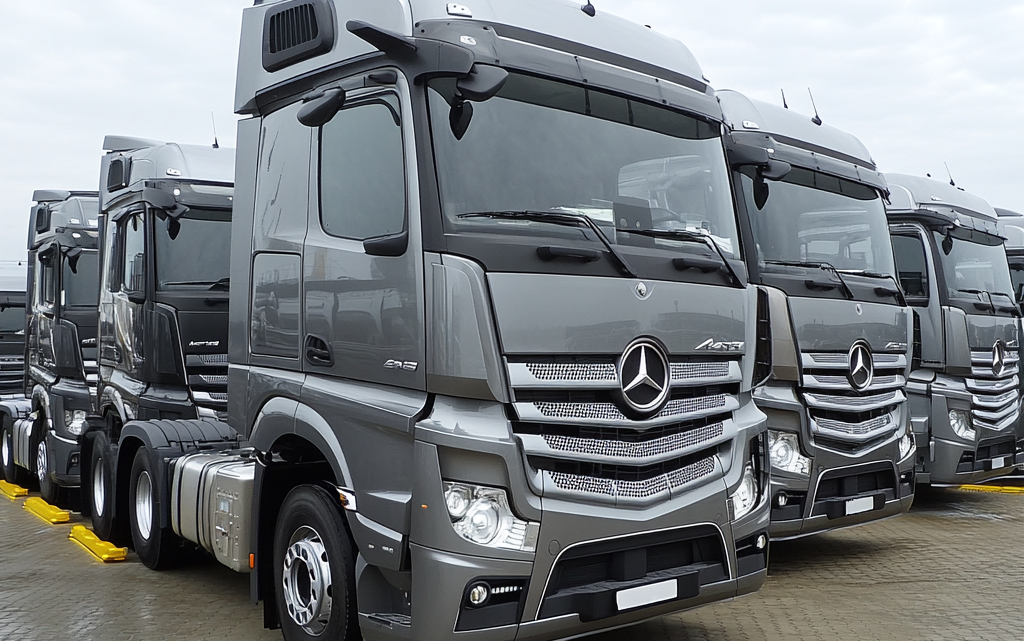
Revolution in transportation: how technology is changing approaches to delivery
Technology is fundamentally changing approaches to logistics and the transportation of goods, opening up new opportunities for faster delivery, increased accuracy and lower costs. If previously delivery was associated with numerous manual operations, long waiting times and human factors, today many processes are automated. More and more companies, large and small, are introducing innovative technologies to improve warehouse operations, delivery routes and transportation safety.
Warehouse automation: the path to process optimization
One of the key technologies that is revolutionizing the logistics industry is warehouse automation. Automatic sorting and storage systems, as well as the use of robots and drones to move goods, significantly speed up the processing process and minimize the human factor. Instead of relying on human labor to move large volumes of goods, robots are now used and can work around the clock to perform tasks with high precision.
Robotic systems They allow not only to automate the transportation process inside the warehouse, but also to significantly speed up the packaging and sorting of goods. This allows companies to not only speed up the delivery process, but also reduce labor costs. In addition, such technologies provide more accurate and safer work: robots eliminate the possibility of human error, which reduces the likelihood of damage to goods and reduces risks.
Driverless vehicles: the future on the roads
Modern technologies allow us to look into the future and see how driverless vehicles are changing approaches to transporting goods. Drones and autonomous vehicles are being actively implemented to transport not only small parcels, but also large cargo, which opens up new horizons for transportation. Delivery using drones can significantly reduce travel time and reduce the load on transport networks.
The advantages of using unmanned vehicles and drones in logistics are obvious:
- Cost reduction: Transportation without drivers or operators saves labor costs.
- Speeding up processes: Self-driving vehicles can move continuously without requiring rest, which greatly reduces delivery time.
- Improved Security: the absence of the human factor reduces the likelihood of errors and accidents.
- Independence from traffic: Drones and autonomous cars can fly around traffic jams and avoid traffic congestion.
Every year, technology companies improve these devices, improving their accuracy, increasing the range of drones and introducing new safety systems. The use of such technologies allows us to reduce delivery time, as well as make it more environmentally friendly and resistant to external influences.
Internet of Things in Logistics: Improving Cargo Monitoring
Internet of Things (IoT) in logistics, it is a technology that is revolutionizing the way goods are tracked and monitored. Thanks to IoT You can not only track the location of goods in real time, but also monitor their condition. This is especially important for goods that require special storage conditions, such as perfumes, medicines or food, which may deteriorate at the wrong temperature.
With the help of sensors built into product packaging, companies can track temperature, humidity, pressure and other parameters affecting the safety of products. In case of deviation from the established norms, the system can automatically warn the operator or even slow down the vehicle to prevent damage to the goods. This not only reduces risks, but also improves customer service by minimizing the number of returns or complaints.
IoT system also helps improve collaboration between different supply chain participants, ensuring complete transparency of the process. Information about the location and condition of goods is available in real time, which allows you to quickly respond to any unexpected situations and ensure more accurate and timely delivery.
Blockchain in transportation: security and transparency of transactions
Technology blockchain used to provide transparency and security transactions, which is extremely important in the field of international logistics. The introduction of blockchain systems makes it possible to create a transparent supply chain, where each stage – from the manufacturer to the end consumer – is recorded in the system. This prevents document falsification, product fraud and increases trust between partners.
Blockchain can be used to automate payments between supply chain participants. For example, the system can automatically issue payments and confirm receipt of goods without requiring the intervention of intermediaries. This reduces transaction processing time and minimizes the risk of errors. Blockchain also improves the system contract management, ensuring transparency of conditions and automatic fulfillment of obligations.
The use of blockchain technologies significantly increases the level of trust between customers and suppliers, reduces the risks of fraud and ensures more effective interaction with partners, which is important in a globalized economy.
Artificial intelligence and analytics: route forecasting and optimization
Artificial Intelligence (AI) and data analytics are becoming important tools in route optimization and supply planning. Today, with the help of AI, it is possible to forecast product needs, analyze demand and predict possible problems in the supply chain. This allows companies to not only respond quickly to changes, but also proactively address potential delays.
AI can analyze huge amounts of data to identify the most efficient routes, taking into account traffic, weather conditions and other factors. This approach allows reduce costs and significantly improve delivery time, which is especially important in conditions of high competition in the logistics market.
The use of analytics in logistics also makes it possible to predict customer needs and optimize inventory of goods, avoiding both overproduction and shortages. This helps companies be proactive rather than reactive, reducing supply risks and improving customer satisfaction.
Technologies in the field of logistics open new horizons for businesses and customers. Automation, driverless vehicles, the Internet of Things, blockchain and artificial intelligence are all innovations that significantly speed up processes, increase accuracy and reduce delivery costs. These changes are making logistics more accessible and secure, improving collaboration between supply chain participants.
With advances in the transportation of goods, there is no doubt that we will witness even more significant changes in the future. We already see how robots And drones are beginning to be actively used for delivery, and blockchain And AI become an integral part of this process. In the future, perhaps all logistics will be fully automated, and people will monitor the processes through screens.
One of the most noticeable changes has been automation, which is used at all stages – from route planning to delivery to final destinations. More and more attention is being paid to digitalization, Internet technologies, as well as the use of artificial intelligence to predict demand and analyze data. In turn, such changes not only increase efficiency, but also make logistics safer and more transparent.
However, technology is only the beginning. It is important to understand that an equally important aspect is their integration with current systems and successful application in practice. Many of today’s solutions require significant capital investment and may only be available to large companies. But with the development of technology and the reduction in equipment costs, these solutions will become available to small businesses, which will open up new opportunities for all market participants.
Technology certainly plays a critical role in the transportation of goods, but its successful implementation and use depends on how quickly and efficiently the transition from old operating models to new innovative solutions is realized.
The use of driverless vehicles reduces driver labor costs, speeds up delivery processes and optimizes routes, which ultimately reduces delivery costs.
IoT systems allow you to monitor the condition of goods in real time, monitor parameters such as temperature and humidity, and automatically notify of any deviations, preventing damage and ensuring product safety.
